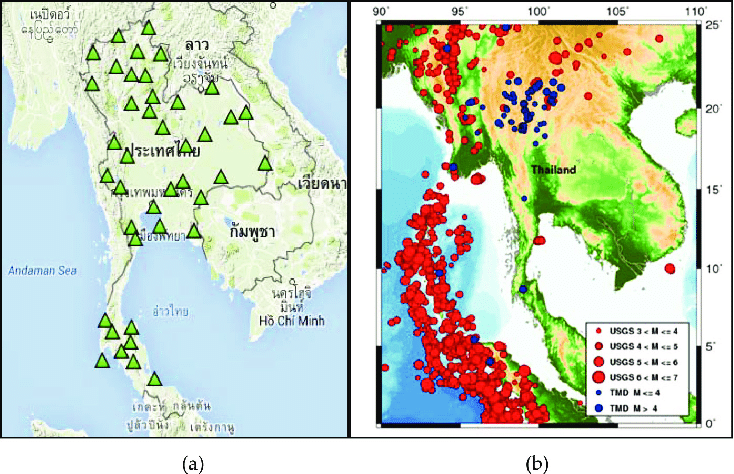Thailands Seismic Activity
Thailand is essentially surrounded by tectonic plate boundaries, and while there are numerous subduction zones and faults around the province, there is quite little seismic activity in comparison. There are know to be around 5 earthquakes per year in Thailand and as I discovered last week, there hasn't been one with a magnitude over 7 ever recorded in the country.
One of the more talked about earthquakes in Thailand was in the Mae Lao district in 2014 with a recorded moment magnitude of 6.2. Due to this event, researchers have concluded that the northern parts of Thailand are under much more stress than other regions, and may be more prone to earthquakes. It was known by these researchers that southeast Asia had been more reactive to subduction zones, which is what led them to testing for stress levels around the country. Due to a subduction zone along the southeast coast, but less stored energy in the earths crust, the opposite side of the country is still considered at less risk for earthquakes. However the south is more at risk for tsunamis caused by earthquakes at the Indo-Eurasian plate boundary to the east, and the Ring of Fire from the south. Although there isn't highly frequent activity, they have taken lengthy steps to better understand where they are the most at risk in their country.
There are also multiple strike-slip faults that descend into Thailand from the countries above. These also cause for a number of earthquakes in the northern area, but don't concern most people to much, as they have been seen to only move about 5mm per year or less. They also tend to not cause earthquakes(tectonic creep) or very small ones.
In Thailand they go about preparing people for earthquakes by dividing them into areas depending on the level of risk. Even though the country is only at a low to moderate risk, they use low, moderate, and high risk areas to help prepare in the face of an earthquake. In high risk areas there are certain building regulations(such as non high rise apartments, and better foundational engineering) in the works to make sure buildings are sturdy due to the soft soils in their areas. And so on for moderate and low risk areas. The country has spent a lot of money since the tsunami of 2004 in upgrading and improving technology to better predict and spread word quickly about natural disasters. While I can'y say they have finished their plans to stay prepared in terms of earthquakes, I can say they have quite a few disaster relief teams around the country, including the Thai Red Cross.
Resources:

It was interesting reading about your country as I have noticed some similarities between our countries. First of all just like Thailand the country of Vietnam has also only had an earthquake with the magnitude of 6.2 as well being its biggest quake. The other thing is it hasn't experiences a quake over 7.0 as well. The North part of Vietnam is also a place in which they expect more natural disasters to happen like earthquakes.This is the case because my country is not directly on a boundary which is why its only a medium risk country with flooding being the primary disaster than quakes.
ReplyDeleteSouth Korea is similar to Thailand because they both have low volcanic activity. Also, their average number of earthquakes every year is not far off from each other. like Thailand having a large earthquake of 6.2, South Korea also has had a rather large one as well in recent years. Because of more recent volcanic activities South Korea has been practicing and improving upon their safety measure and drills. Similar to technology to spread the word quickly South Korea has mapped out all of the at-risk people, roads, and building structures to get a better idea of high-risk areas. I think it's great that even though both countries have lower activity they continue to prep and prepare for the worst. You can never be too prepared!
ReplyDelete